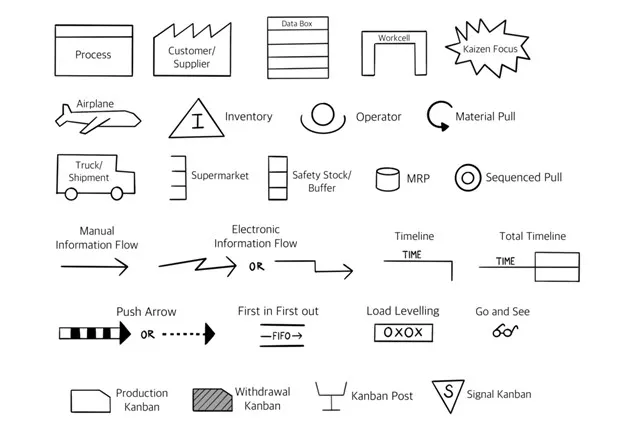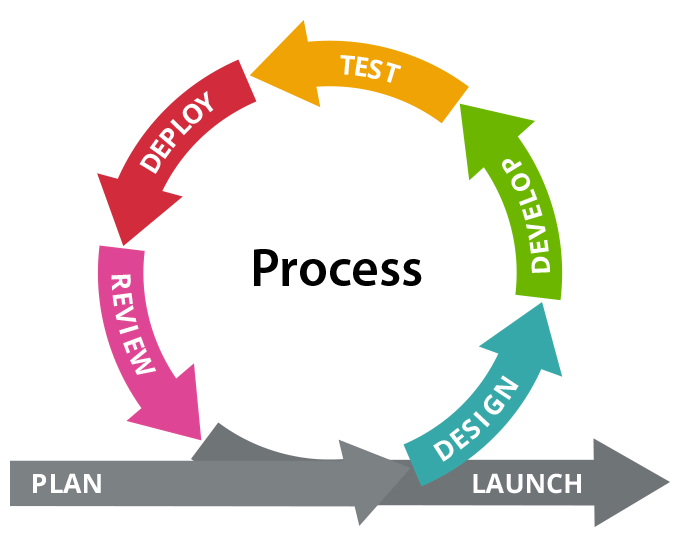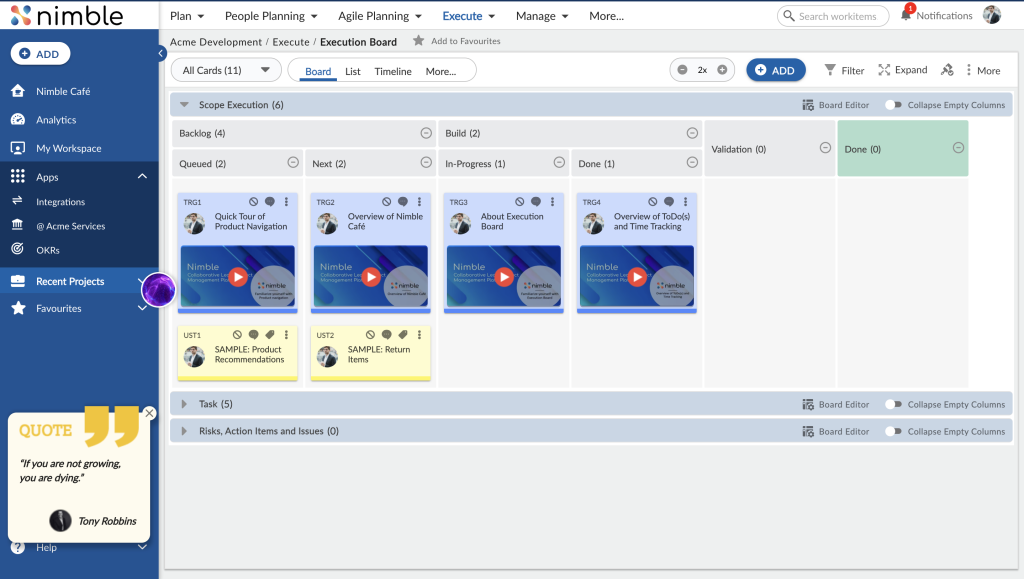Value Stream Mapping (VSM) is a lean management technique for process improvement that has its roots in the manufacturing sector. Initially developed as part of the Lean Manufacturing methodology, VSM has since evolved and found application in a wide range of industries, including knowledge work sectors such as IT, software development, marketing, and HR.
Value stream mapping can typically be used to improve any process where there are repeatable steps. In many cases when there are multiple handoffs. In this comprehensive guide, we will cover how VSM can be tailored to suit the unique characteristics of knowledge work, providing practical examples and insights along the way. So, let’s get started:
Background and Historical Perspective
Value Stream Mapping (VSM) emerged as a fundamental component of Lean Manufacturing, a methodology pioneered by Toyota in the 20th century. At its core, Lean Manufacturing seeks to eliminate waste and optimize processes to deliver maximum value to customers while minimizing resources and time.
Source: Toyota Global
In the manufacturing context, VSM was initially used to visualize and analyze the flow of materials through production processes. By creating a visual representation of the entire value stream—from raw materials to finished products—organizations could identify inefficiencies, bottlenecks, and areas for improvement.
The adoption of VSM in manufacturing proved highly successful, leading to significant improvements in productivity, quality, and customer satisfaction. As Lean principles gained traction beyond the manufacturing sector, organizations in knowledge work industries began to recognize the potential of VSM to optimize their processes.
Adaptation of VSM to Knowledge Work Industries
In knowledge work industries, the “product” is often intangible, such as software, marketing campaigns, or HR processes. Despite this difference, the underlying principles of VSM—visualizing workflow, identifying waste, and driving continuous improvement—remain highly relevant.
To adapt VSM to knowledge work contexts, organizations began to focus on mapping the flow of information and tasks rather than physical materials. Information symbols replaced material symbols, representing communication channels, data flow, and decision-making processes. Process symbols evolved to represent the various stages of a project or task. Such as requirements gathering, design, development, testing, and deployment in software development, or planning, execution, monitoring, and optimization in marketing campaigns.
When companies leverage VSM techniques tailored to knowledge work processes, they enhance collaboration and improve efficiency across various functions. VSM can used to streamline software development workflows, optimize marketing campaign execution, and improve HR processes. It offers a systematic approach to identifying opportunities for improvement and driving change.
Key Components of Value Stream Mapping in Knowledge Work
1. Information Symbols
In knowledge work VSM, information symbols represent communication channels, data flow, and decision-making processes. For example, email correspondence, meetings, and project milestones can be depicted using arrows, clouds, or other symbols to illustrate the flow of information.
In a software development project, email notifications, team meetings, and code reviews can be represented using symbols to visualize the communication and collaboration process.
Source: Medium
2. Process Symbols
Process symbols in knowledge work VSM represent the various stages of a project or task. These stages could include requirements gathering, design, development, testing, and deployment in software development, or planning, execution, monitoring, and optimization in marketing campaigns.
For example, in a marketing campaign, process symbols can represent stages such as campaign planning, content creation, social media posting, performance analysis, and optimization. This provides a visual representation of the campaign workflow.
Creating a Value Stream Map (VSM) for Knowledge Work Processes
Let’s consider a practical example of applying Value Stream Mapping (VSM) in software development to illustrate its effectiveness in optimizing workflows and driving process improvements.
In this example, we will consider a software development team working on a web application for an e-commerce platform. The team follows an Agile methodology and is responsible for delivering new features, bug fixes, and enhancements to the application.
The objective is to identify and eliminate bottlenecks in the development process, streamline collaboration between team members, and improve the overall efficiency of delivering software changes to production.
Steps in Value Stream Mapping
1. Define the Scope
Begin by defining the scope of the value stream mapping exercise. In this case, the scope includes the entire software development lifecycle, from requirements gathering to deployment.
2. Gather the Team
Assemble a cross-functional team consisting of developers, testers, product managers, and any other stakeholders involved in the software development process. This ensures that diverse perspectives are considered during the mapping process.
3. Map the Current State
Create a visual representation of the current software development process using Value Stream Mapping techniques. Identify each stage of the process, including:
☑ Requirements gathering
☑ Sprint planning
☑ Tech design
☑ Coding
☑ Code review
☑ Testing
☑ Deployment
Use symbols and annotations to indicate the flow of work, handoffs between stages, and any delays or bottlenecks in the process.
4. Analyze the Current State
Once the current state map is complete, analyze it to identify areas of inefficiency or waste. Look for bottlenecks where work tends to pile up, delays in handoffs between stages, or manual tasks that could be automated.
5. Design the Future State
Based on the analysis of the current state, brainstorm solutions and improvements to create a future state map. This map should depict an optimized software development process with streamlined workflows, reduced cycle times, and improved collaboration.
6. Map the Future State
Create a new Value Stream Map representing the ideal future state of the software development process. Incorporate the identified improvements, such as:
☑ Implementing automated testing
☑ Introducing code review automation tools
☑ Streamlining deployment processes
☑ Improving communication and collaboration between team members
7. Implement and Monitor
Outline a plan to implement the improvements identified in the future state map. Assign responsibilities, set timelines, and track progress toward achieving the desired outcomes. Monitor key metrics such as cycle time, lead time, and defect rate to measure the impact of the improvements over time.
After implementing the improvements identified through Value Stream Mapping, the software development team will experience several positive outcomes:
☑ Cycle times for delivering new features will be reduced.
☑ Automated testing processes will improve code quality and reduce the number of defects found in production.
☑ Code review automation tools streamline the review process, reducing review cycle times.
☑ Deployment processes are optimized, leading to faster and more reliable releases to production.
Benefits of Value Stream Mapping in Knowledge Work
Value Stream Mapping (VSM) holds significant promise for enhancing knowledge work processes by providing organizations with a structured approach to analyzing and improving workflow efficiency. The following are some of the benefits:
☑ Enhanced Collaboration: VSM facilitates cross-functional collaboration and communication, leading to improved alignment and efficiency in knowledge work processes.
☑ Improved Decision-Making: VSM provides valuable insights into process performance, enabling informed decision-making and continuous improvement in knowledge work processes.
☑ Streamlined Workflow: Value stream mapping helps streamline knowledge work processes by identifying and eliminating unnecessary steps, redundancies, and delays.
☑Enhanced Problem-Solving: Value stream mapping encourages a systematic approach to problem-solving by identifying root causes of issues within knowledge work processes.
☑ Increased Customer Satisfaction: Through value stream mapping, teams gain insights into customer requirements and expectations, allowing them to align their processes more closely with customer needs.
Challenges in Implementing Value Stream Mapping
Implementing Value Stream Mapping (VSM) presents organizations with a way of improving processes and driving efficiency. However, it also comes with its share of challenges, particularly in knowledge work environments where processes are often complex and dynamic. The following are some of the challenges you may encounter:
☑ Complexity of Processes: Knowledge work processes are often complex and dynamic, making it challenging to accurately map and analyze them using traditional VSM techniques.
☑ Limited Standardization: Knowledge work processes often lack standardized procedures and workflows, making it difficult to create consistent value stream maps across different teams or projects. This lack of standardization can impede the effectiveness of VSM implementation and hinder comparisons between value streams.
☑ Data Accessibility and Quality: Gathering accurate and comprehensive data for value stream mapping in knowledge work can be challenging due to the intangible nature of many knowledge work activities. Additionally, the quality and reliability of available data may vary, impacting the accuracy and validity of the value stream map.
☑ Limited Cross-Functional Understanding: Value stream mapping requires input and collaboration from multiple stakeholders across different departments or functions. However, achieving a shared understanding of the entire value stream and its interdependencies can be challenging.
☑ Resistance to Change: People in knowledge work roles may resist changes to established workflows or processes, hindering the implementation of VSM-driven improvements.
Best Practices for Effective Value Stream Mapping
☑ Adapt VSM Techniques: Tailor VSM techniques to suit the unique characteristics of knowledge work processes, such as using agile methodologies in software development or iterative approaches in marketing campaigns.
☑ Engage Stakeholders: Involve stakeholders from across the organization in the VSM process to ensure buy-in and collaboration throughout the improvement journey.
☑ Establish Key Performance Indicators (KPIs): Define clear and measurable Key Performance Indicators (KPIs) to track the success of VSM initiatives. Identify relevant metrics such as cycle time, lead time, throughput, and quality indicators, and establish baseline measurements to assess the impact of process improvements. Regularly monitor and analyze KPIs to evaluate progress, identify areas for further optimization, and celebrate successes.
☑ Promote Leadership Support and Sponsorship: Secure leadership support and sponsorship for VSM initiatives to ensure organizational alignment and resource allocation. Engage senior leaders as champions of the VSM process, communicating the importance of process improvement efforts and providing the necessary resources and support for implementation. Leadership involvement demonstrates a commitment to driving change and fosters a culture of accountability and empowerment throughout the organization.
Conclusion
Value Stream Mapping (VSM) is a valuable technique for optimizing processes and improving efficiency in knowledge work industries. When companies adapt VSM principles and techniques to suit the unique characteristics of intellectual work, they can enhance collaboration and drive continuous improvement in their knowledge work processes. VSM empowers knowledge work teams to deliver greater value to customers and stakeholders. Nimble offers a comprehensive platform that facilitates seamless collaboration and task management, making it an ideal tool for value stream mapping by providing real-time visibility into processes, streamlining communication, and enabling teams to identify and eliminate bottlenecks more efficiently. Start your Free trial.














